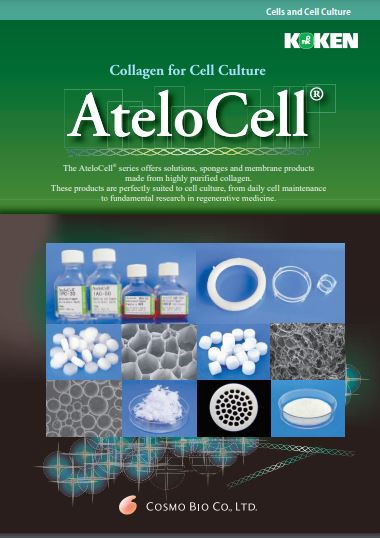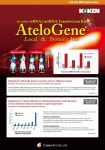
Atelogene® Live Mouse Transfection Kits
Atelogene® Systemic Frequently Asked Questions
Is it possible to use a concentration of siRNA/miRNA higher than the recommended amount?
Several articles have shown dose-dependent effects but there are no reports of problems encountered by using concentrations of siRNA/miRNA higher than the recommended concentration.
Can I store a mixture of AteloGene® and siRNA/miRNA?
We recommend preparing the mixture at the time of use. It is possible to prepare the mix on a small scale if you need a small quantity. Please ask us for details.
Is it effective to administer a smaller volume of a mixture of AteloGene® and siRNA/miRNA than the recommended dose?
For AteloGene® Systemic Use, we advise that you to use the recommended dose.
Can I use AteloGene® in animals other than mice, for example, rats and rabbits?
The recommended dose of AteloGene® Systemic Use is 1/10 of the body fluid of a mouse, so the required amount of AteloGene® will be proportionally larger for other animals. Please consider using AteloGene® Local Use “Quick Gelation” if you need to conduct transfection and evaluation in a specific tissue.
Is AteloGene® also effective for vector-type nucleic acids, such as plasmid DNA?
To date, there has been no report of the use of AteloGene® Systemic Use for the administration of vector-type nucleic acids.
How long does the effect of siRNA/miRNA last?
With AteloGene® Systemic Use, the effect lasts for a few days following systemic administration.
Is AteloGene® applicable for in vitro experiments?
AteloGene® is designed for in vivo experiments only. Please use AteloGene® for your in vivo experiments following in vitro evaluation of siRNA/miRNA.
Does siRNA/miRNA accumulate in specific tissues?
Unlike liposome-based transfection reagents, siRNA/miRNA does not accumulate specifically in liver and lung but rather is delivered to a variety of tissues by AteloGene®. It has been reported that AteloGene® tends to cause siRNA/miRNA to accumulate in cancer and inflamed tissues.
Why does i.v. administration have to be slow (10 μL/s)?
Because 200 mL of an ice cold mixture of AteloGene® and siRNA/miRNA, which is 1/10 of the total body fluid in a mouse, is injected into a vein. Unintended consequences could therefore result from rapid injection.
Information on this page is based on published articles and in-house data.



